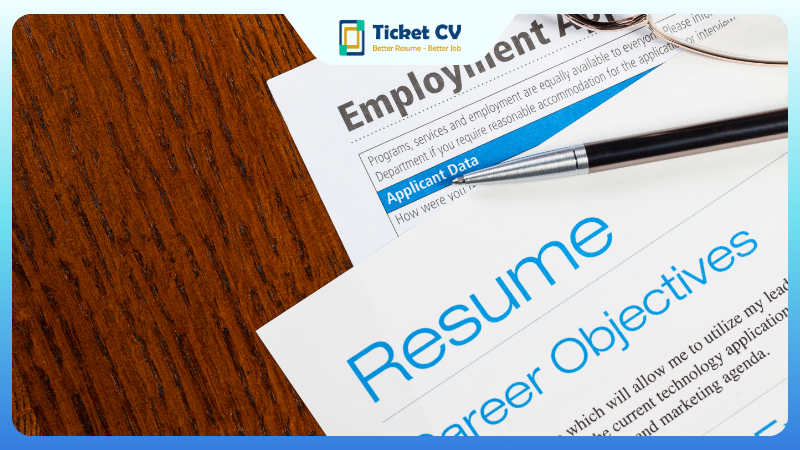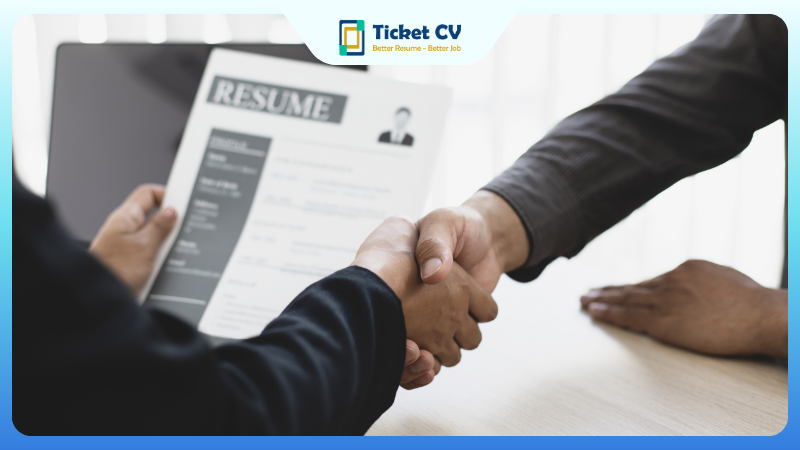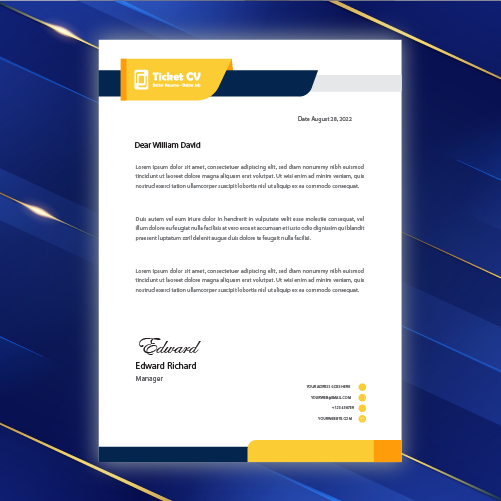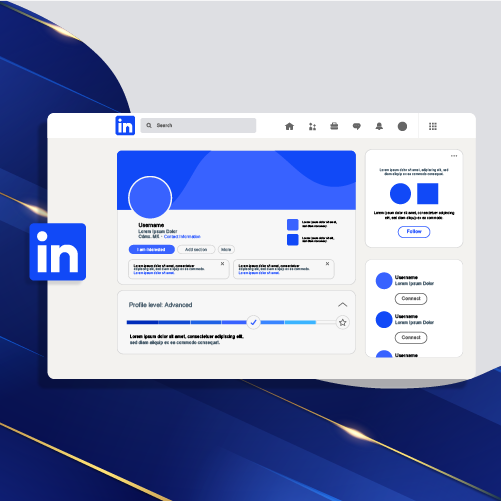Understanding how long it takes to hear back after applying for a job can be advantageous. Interest in the job and qualifications are crucial, while networking can play a pivotal role in conveying your message to the hiring team. Patience is key as you await a response.
Response times vary based on company policies, application volume, and hiring urgency./// Managing expectations regarding these response times is important.
Setting realistic expectations helps avoid unnecessary stress, considering that response times differ across industries and may be influenced by company size.///
Contents
ToggleTypical Waiting Period After Job Application
Average Response Time
The average response time after applying for a job can vary significantly based on the industry, the specific company, and call. In general, candidates should anticipate a waiting period ranging from a few days to several weeks before hearing back from employers. This timeframe allows companies to review applications thoroughly, assess qualifications, and shortlist potential candidates for further stages of the hiring process.
Response times are influenced by various factors such as the volume of applicants, internal procedures within the organization, and the complexity of the hiring process. It’s essential for job seekers to understand that different industries and companies may have distinct timelines for responding to job applications. While some organizations prioritize swift responses, others may take longer due to their internal processes.
Industry Variations
It’s crucial to consider industry variations. For instance, tech companies often have quicker response times compared to traditional corporations in sectors like finance or manufacturing. This is because technology firms typically operate in fast-paced environments where decisions are made swiftly.
On the other hand, government agencies tend to have longer response times due to bureaucratic processes and extensive protocols involved in reviewing applications. Understanding these industry-specific differences can help applicants manage their expectations effectively while awaiting responses from prospective employers.
Company Size Impact
The size of a company also plays a significant role in determining how long it takes for applicants to hear back after submitting their resumes or applications. Larger corporations with substantial employee bases might experience higher volumes of incoming applications, leading to potentially longer wait times before candidates receive any form of communication regarding their submissions.
Conversely, smaller companies often boast streamlined processes that enable them to review applications more promptly and provide timely feedback or interview invitations when they identify suitable candidates. Job seekers should keep this factor in mind when gauging how long they might need patience during their new job search endeavors.

Factors Influencing Employer Response Time
Application Volume
High application volume often leads to longer response times for job applicants. When companies receive a large number of applications, it takes time to review each one thoroughly. This can result in delays in getting back to candidates. Conversely, companies with lower application volumes may respond more promptly as they can efficiently manage and assess the received applications.
Understanding the impact of application volume is crucial for job seekers who are eager to hear back quickly after applying for a position. It’s important to keep in mind that the number of applicants vying for the same role directly influences an employer’s ability to respond swiftly.
- Pros:
- A high application volume indicates a competitive job market.
- Employers may be thorough when reviewing applications due to the large pool of candidates.
- Cons:
- Longer wait times can lead to increased stress and uncertainty for applicants.
- Higher competition among applicants may reduce individual chances of receiving quick responses.
Hiring Urgency
Companies with urgent hiring needs tend to respond more quickly after receiving job applications. If an organization has immediate staffing requirements or is facing unexpected employee turnover, they are likely motivated to expedite their hiring process and provide timely responses to potential candidates.
Understanding hiring urgency within a company provides valuable insight into potential response times following an application submission. Seasonal hiring patterns can also significantly affect how urgently employers need new hires, thus impacting their responsiveness accordingly.
- Key Information:
- Companies experiencing rapid growth or expansion might have urgent hiring needs.
Internal Processes
The complexity of internal processes within organizations plays a pivotal role in determining response times after job applications have been submitted. Complex procedures, such as multi-stage interviews or extensive background checks, can result in delayed communication with applicants.
Conversely, companies with streamlined internal procedures are better equipped to provide faster responses as they navigate through the recruitment process more efficiently. Job seekers should consider this factor when anticipating feedback from prospective employers and be mindful that internal processes greatly influence response speed.
Follow-Up Strategies for Job Applications
Proper Timing
After applying for a job, it’s crucial to time your follow-up communication effectively. Emailing the hiring manager within a week of submitting your application can express your continued interest and keep you on their radar. Consider reaching out via LinkedIn to connect with employees at the company. This could provide an alternative channel to inquire about the status of your application. If the job description lists specific qualifications or skills, following up by demonstrating how you meet those requirements can further emphasize your suitability for the role.
Utilize traditional methods as well; calling the HR department a few days after the closing date can be another effective way to inquire about the status of your application. By using multiple channels, you increase your chances of getting noticed and receiving a response.
Communication Channels Email is one of the most common methods used by companies to correspond with applicants. It provides an efficient and professional way to maintain contact throughout the hiring process. However, networking should not be overlooked; leveraging personal or professional connections can help in finding alternative communication channels within an organization.
Sending a follow-up message after applying serves as more than just expressing continued interest – it also demonstrates additional skills, such as written communication and professionalism. Furthermore, calling directly shows initiative and may expedite the hiring process by allowing for immediate dialogue between yourself and members of the hiring team.
Persistence vs Patience
It’s essential to find balance between being persistent without coming across as pushy when waiting to hear back after applying for a job. Following up at appropriate intervals showcases determination while respecting their timeline; this keeps you top-of-mind without overwhelming them with excessive messages or calls.
Networking plays an integral role in standing out during this phase; having someone from within vouch for you or bring attention to your application can give you an advantage over other candidates who solely rely on traditional means of follow-up.
Understanding that various factors influence response times is crucial in managing stress during this period of uncertainty regarding whether or not they will proceed with considering you further.

Maximizing Time While Awaiting a Response
Skill Enhancement
Enhancing your skills can significantly improve your chances of hearing back after applying for a job. Tailoring your qualifications to the specific job description shows that you are an ideal fit for the position, increasing the likelihood of being contacted by the hiring team. For example, if a job posting emphasizes proficiency in certain software programs, consider taking an online course or obtaining relevant certifications to strengthen this skill.
Networking with professionals in your industry is also crucial. By attending industry events or connecting with professionals on platforms like LinkedIn, you may stumble upon unadvertised job opportunities and gain valuable insights into companies’ hiring processes.
Sending a follow-up email after applying demonstrates continued interest in the role and keeps you top of mind for the hiring team. This simple gesture can set you apart from other applicants who don’t take this extra step.
Networking
Utilizing networking as part of your job search strategy can give you a significant edge in the hiring process. Building connections within your industry not only expands your professional circle but also increases your visibility to potential employers.
After networking events or informational interviews, sending a follow-up message expressing gratitude and reiterating interest in any available positions can leave a positive impression on those you’ve connected with. It’s essential to maintain these relationships even if there isn’t an immediate opportunity as they could lead to future openings or valuable referrals.
Connecting with new people opens up avenues for learning about hidden job opportunities that aren’t publicly advertised. Sometimes, jobs are filled through referrals before they’re even posted online, making networking one of the most effective ways to get noticed by prospective employers.
Researching Companies
Conducting thorough research on companies where you’ve applied is crucial during this waiting period. Understanding their hiring process and timeline gives you insight into when it might be appropriate to follow up without appearing impatient.
Leveraging networking connections to get in touch with current employees at the company provides invaluable firsthand information about what it’s like working there and potentially insider knowledge about upcoming vacancies not yet listed publicly.
Emailing directly with the hiring manager expressing genuine interest and enthusiasm for joining their team can help keep your application at the forefront of their minds while showcasing initiative and proactive communication skills – qualities many employers value highly.
Ensuring that your skills align closely with what’s outlined in the job description is paramount; it increases both initial consideration and subsequent callbacks from potential employers.
Effective Ways to Follow Up on Job Applications
Using a clear and concise subject line is crucial. The subject line should include your name and the position you applied for. In the body of the email, craft a professional and polite message expressing your continued interest in the position.
Highlight relevant skills and qualifications mentioned in the job description to remind the hiring manager of your suitability for the role. Keep your email brief and to-the-point, respecting their time while also reiterating your enthusiasm for the opportunity.
Follow up within a reasonable timeframe if you haven’t received a response. This shows persistence without being pushy, indicating genuine interest in the position.
Managing Stress During the Waiting Period
Mindfulness Practices
During the nerve-wracking waiting period after applying for a job, applicants can benefit from mindfulness practices. By taking a few minutes each day to focus on activities that divert attention from the waiting process, individuals can effectively manage stress. Engaging in networking skills without being pushy and sending brief follow-up emails expressing continued interest in the position are also helpful strategies. These actions not only demonstrate enthusiasm but also keep applicants fresh in hiring managers’ minds.
Applicants should use this time to their advantage by redirecting their focus onto building new skills or expanding their professional network. This is an opportune moment to practice mindfulness and alleviate stress while staying connected with potential employers.
Physical Activity
Incorporating physical activity into daily routines can significantly reduce stress levels and improve mental clarity during the anxious wait for a response from prospective employers. Taking just a few minutes for a quick walk or engaging in stretching exercises can work wonders in clearing one’s mind and enhancing productivity. Participating in physical activities offers an excellent opportunity to expand one’s professional network by connecting with like-minded individuals who share similar interests.
Engaging in various forms of physical activity, such as hand exercises or short bursts of movement, contributes to overall well-being and helps maintain composure during the prolonged anticipation of hearing back from potential employers.
Support Systems
Building a robust support system plays an instrumental role in alleviating anxiety during this challenging phase of job hunting. Networking with professionals within the company provides valuable insights and may even offer an edge over other applicants. Sending thank-you emails after submitting applications demonstrates genuine interest while emphasizing qualifications that align with the job description sets candidates apart from others vying for the same position.
Having a reliable support system comprising friends, family members, or mentors who understand what it takes to navigate through career challenges is crucial for maintaining composure throughout this taxing waiting period.

Speeding Up Employer Response Time
Completing applications is crucial. Applicants must ensure their skills and qualifications align with the job requirements before hitting “submit.” After the application deadline, hiring teams review submissions and reach out to suitable candidates.
Networking or sending a follow-up email after submitting an application can help applicants stay on the radar of the hiring team. By doing this, applicants demonstrate continued interest in the position, which can positively influence employers’ perception.
A complete application not only showcases an applicant’s qualifications but also sets them apart from other candidates. It allows hiring managers to accurately assess whether an applicant meets the necessary criteria for the role.
Clear Follow-Ups
After applying for a job, sending a brief and polite follow-up email is one of the most effective ways to express continued interest in the position. This approach keeps applicants on employers’ radars without being intrusive.
Using networking connections to find the right person to follow up with can provide valuable insight into where things stand with your application. Calling the company directly to inquire about their hiring process shows proactive engagement and genuine interest in securing employment.
In these follow-up communications, highlighting relevant skills and qualifications tailored specifically to match the job description reinforces an applicant’s suitability for a role.
Leveraging Connections
Leveraging networking connections plays a significant role in expediting employer response time. When reaching out through networking channels, emphasizing relevant skills and qualifications helps individuals stand out from other applicants.
Expressing genuine interest in both the company and position when leveraging connections demonstrates enthusiasm that can leave a lasting impression on potential employers. Furthermore, considering sending a well-crafted follow-up email expressing continued interest reaffirms commitment while maintaining professionalism.
Seeking Insider Information on Response Time
Applicants Skills and Qualifications
Applicants’ skills and qualifications are pivotal in the hiring process. Employers often prioritize candidates with the most relevant skills and experiences. By tailoring your application to highlight these qualifications, you can increase your chances of receiving a prompt response. For instance, if a job posting emphasizes specific technical skills or certifications, ensure that these are prominently featured in your resume and cover letter.
Expressing Genuine Interest Expressing genuine interest in the position can provide applicants with an advantage when waiting for a response from employers. A well-crafted follow-up email after submitting an application demonstrates enthusiasm for the role while also keeping you on the employer’s radar. This proactive approach may positively influence their decision-making process, potentially leading to quicker responses.
Networking with Company Insiders Networking within the company or industry can yield valuable insights into both the team dynamics and job description. Connecting with current employees through professional networking platforms like LinkedIn might offer insider information about typical response times for applications within that organization. Moreover, establishing meaningful connections could potentially lead to internal recommendations or referrals, expediting the overall hiring process.
Understanding Decision-Making Factors Reducing stress levels associated with waiting for a response involves understanding various factors influencing employers’ decisions. While some companies have streamlined recruitment processes resulting in quick responses, others may have more extensive evaluation procedures leading to longer wait times. By being mindful of these factors, applicants can manage their expectations accordingly while awaiting feedback.
Industry Forums
Valuable Information Sources Industry forums serve as invaluable sources of information regarding hiring processes and timelines across different organizations within specific sectors. Engaging actively in discussions on such platforms provides opportunities to learn about typical response durations after applying for positions similar to those sought by individuals participating on these forums.
Networking Opportunities Participating actively in industry forums presents ample opportunities to network with seasoned professionals who possess insightful knowledge about average response times following job applications within respective industries or fields of expertise.
Insights into Effective Follow-Up Strategies Engaging meaningfully with industry peers via online forums not only offers insights into average turnaround times but also provides guidance on effective ways to follow up on submitted job applications without appearing overly persistent or disinterested.
Steps to Take If No Response After Application
Reevaluating your application and taking proactive steps can increase your chances of receiving a response.
Reviewing Qualifications and Skills
Review the job description and compare it with your qualifications and skills. Ensure they align, highlighting relevant factors that make you a strong fit for the position. This will help you determine if your application truly matches the requirements.
Consider sending a follow-up email expressing continued interest in the position. Politely inquire about the status of your application, expressing enthusiasm while seeking clarification on any aspects of the role or hiring process that may not be clear.
Utilize networking connections to gain insight into the hiring process. Engaging with individuals familiar with the company or industry can provide valuable information about typical response times and what to expect during the selection process.
Keep in mind that responses from employers may vary widely; some applicants receive feedback within minutes, while others may wait days or even weeks before hearing back. Understanding this variability is crucial for managing expectations during your job search journey.
Broadening Job Search
Expanding your job search beyond traditional platforms can open up new opportunities. Explore additional job boards, professional networks, and industry-specific events to discover potential openings aligned with your skills and interests.
Tailor each application meticulously by aligning it closely with each specific job description’s requirements. Highlight relevant skills and qualifications prominently in resumes, cover letters, and other communication channels when reaching out to prospective employers.
Follow up promptly after submitting an application by sending a polite email expressing continued interest in the position. This demonstrates proactive engagement while keeping you at the forefront of recruiters’ minds as they review applications.
Take advantage of any opportunity to connect directly with individuals within hiring teams through networking events or mutual connections. Building relationships within organizations where you are seeking employment can provide valuable insights into their recruitment processes while potentially increasing visibility as a candidate.
Seeking Feedback
Leverage networking contacts within companies where you have applied to seek constructive feedback on your applications. Connecting with insiders can offer invaluable guidance on areas for improvement or potential reasons behind delayed responses from employers. Sending a polite follow-up email shows ongoing interest in positions applied for while prompting potential responses from hiring managers who appreciate proactive communication from candidates. Emphasizing relevant skills and qualifications in correspondence increases visibility among decision-makers reviewing applications, possibly encouraging them to provide insightful feedback on candidacy suitability. Understanding typical timelines associated with various stages of employer selection processes provides clarity on when applicants might reasonably expect initial responses following submission.
Conclusion
In the competitive job market, the waiting period after submitting an application can be a source of anxiety and uncertainty. Understanding the typical response time and factors influencing it can help applicants manage their expectations and alleviate stress. By utilizing effective follow-up strategies and seeking insider information, individuals can take proactive steps to stay engaged in the process while awaiting a response. It’s crucial to maximize this time by continuing the job search and investing in personal development. Being prepared for various scenarios, including a delayed or no response, empowers applicants to navigate the post-application phase with confidence.
Ultimately, staying proactive and informed during the waiting period is essential for job seekers. By implementing the recommendations outlined in this article, individuals can enhance their overall application experience and maintain a positive mindset throughout the process.
Frequently Asked Questions
How long does it typically take to hear back after applying for a job?
The typical waiting period can vary widely, but most employers take anywhere from one to three weeks to respond after the application deadline.
What factors can influence employer response time after submitting a job application?
Factors such as the volume of applications received, company hiring processes, and urgency in filling the position can significantly impact how quickly an employer responds.
Is it appropriate to follow up on a job application, and if so, what are some effective strategies?
Yes, it’s appropriate. Sending a polite follow-up email or making a brief phone call about 1-2 weeks after applying is generally acceptable. It shows enthusiasm while being respectful of their time.
What should one do while waiting for a response from an employer?
Use this time effectively by continuing your job search and networking. Consider enhancing skills or qualifications that could make you more competitive in the job market.
How can someone manage stress during the waiting period for a potential job offer?
Engaging in activities like exercise, hobbies, or mindfulness practices can help alleviate stress. Maintaining realistic expectations and staying proactive with other opportunities is essential.












